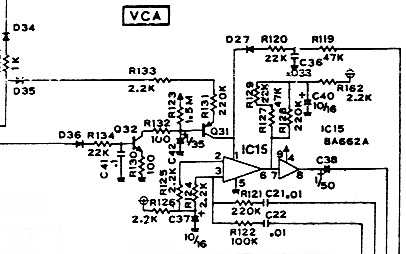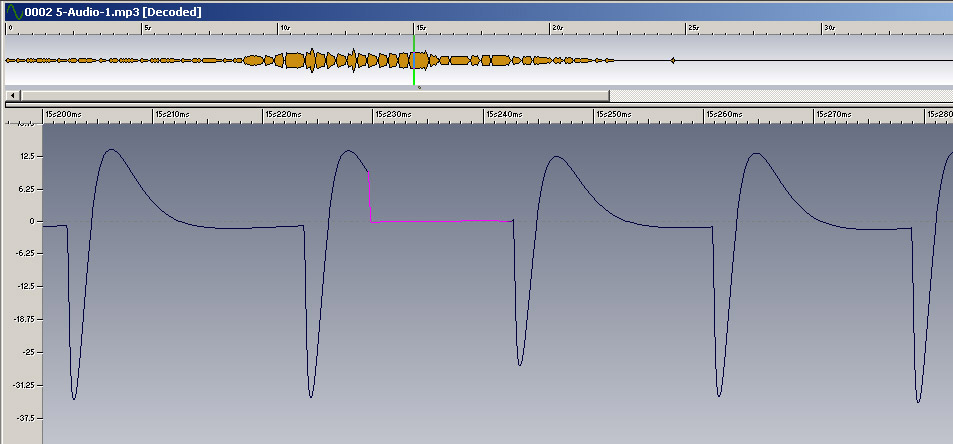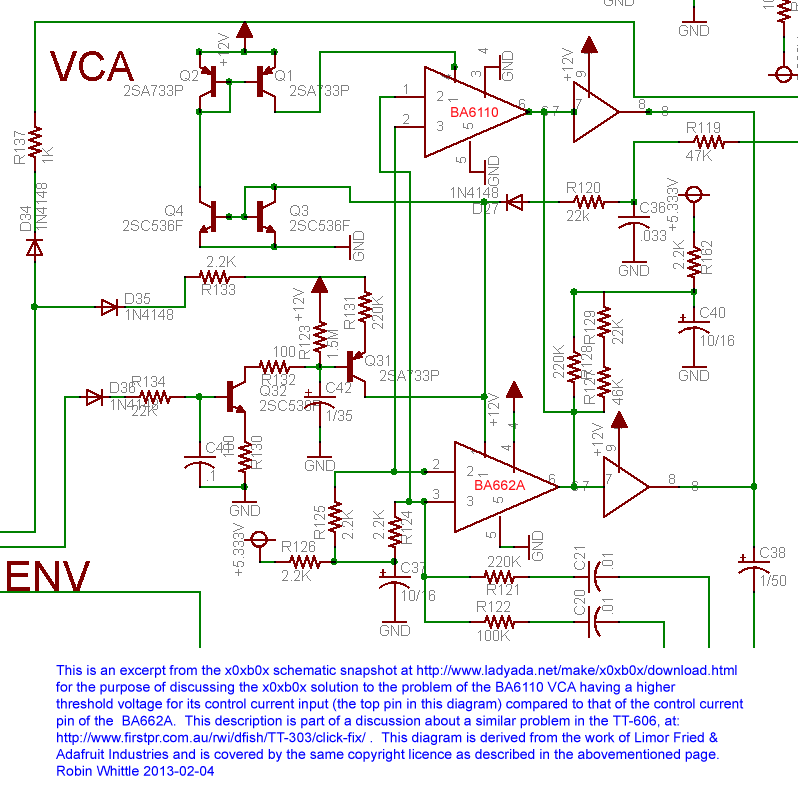
A click problem with the TT-303 when playing closely spaced notes
via MIDI In
2013-02-04 Robin Whittle
rw@firstpr.com.au Please read the overall description of this problem in the ../#diffs section of the main page.
This problem would only occur when playing closely spaced notes via MIDI In. The internal sequencer can't play such closely spaced notes.
Please do not copy or mirror this material - I am likely to update it.
This page is written for electronic technicians who are already familiar with the TB-303 and who have the schematics handy (http://machines.hyperreal.org/manufacturers/Roland/TB-303/schematics/). I have not seen a BA662 datasheet. Here is an older version of the BA6110 datasheet, which shows the SIP-9 pinout:
Technical details

The problem is due to C42 (I am using TB-303 component names for this explanation) being discharged almost to ground, and so dropping the base of PNP Q31 to this voltage, at the start of each note. This drags the emitter of Q31 down too, but it remains about 0.6 volts above the base voltage. This is OK with the TB-303's BA662A VCA chip, whose control current pin must be at 0.6 volts for current to flow. However with the otherwise functionally identical BA6110 VCA used in the Bass Bot (the BA662A is obsolete), the control pin threshold is about 1.15 volts. The low C42 voltage causes the emitter of Q31 to fall below the 1.15 volt threshold of the BA6110, so the VCA is briefly turned off. This causes the click - the sudden attenuation at the start of a note, while there is a decay from the previous note.
Here is an illustration, with the attenuated section in magenta:

In the x0xb0x (schematics: http://www.ladyada.net/make/x0xb0x/download.html) the solution to this problem is to either use the BA662, without the Q3-Q4 and Q2-Q1 current mirrors, or to use the BA6110 with these current mirrors. This is not a great solution, since these are unmatched transistors and so will not make very good current mirrors compared to what would result from using proper matched pairs or special current mirror devices. The input threshold of the Q3-Q4 current mirror is about 0.6 volts like that of the BA662A's control current input. This drives the second current mirror which is attached to the +12 volt rail, so this will work fine with the BA6110's higher threshold voltage.

There are various other approaches. My approach (which is not detailed here) involves changing the drive to the TT-303's equivalent of the TB-303's C42 (C42 in the x0xb0x) so it doesn't go so low as to drop the emitter of Q31 below, or close to, the ~1.15 volt threshold of the control current of the BA6110 (pin 4, not very clearly labeled, at the top of the device depicted above).